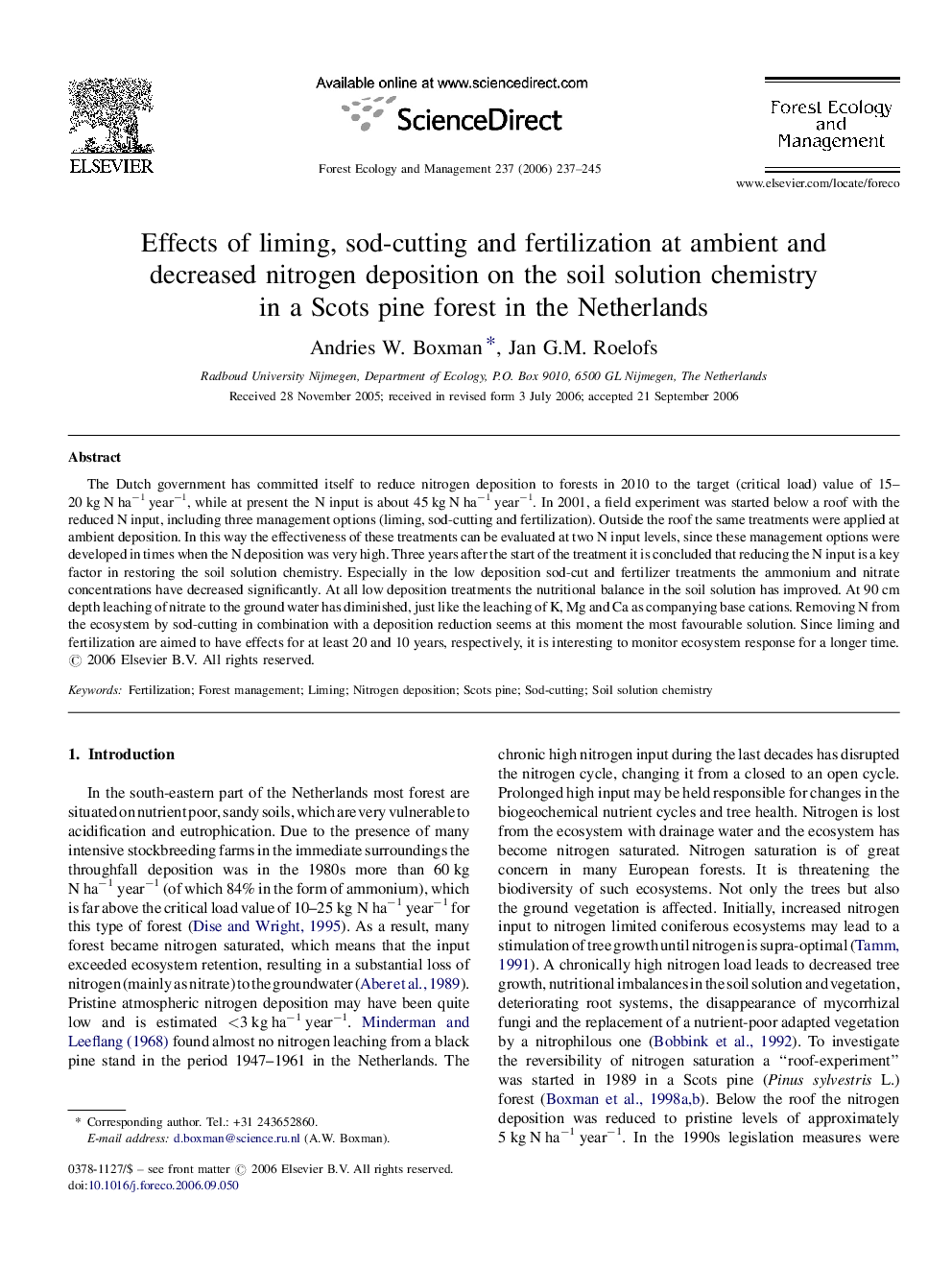| Article ID | Journal | Published Year | Pages | File Type |
|---|---|---|---|---|
| 89955 | Forest Ecology and Management | 2006 | 9 Pages |
The Dutch government has committed itself to reduce nitrogen deposition to forests in 2010 to the target (critical load) value of 15–20 kg N ha−1 year−1, while at present the N input is about 45 kg N ha−1 year−1. In 2001, a field experiment was started below a roof with the reduced N input, including three management options (liming, sod-cutting and fertilization). Outside the roof the same treatments were applied at ambient deposition. In this way the effectiveness of these treatments can be evaluated at two N input levels, since these management options were developed in times when the N deposition was very high. Three years after the start of the treatment it is concluded that reducing the N input is a key factor in restoring the soil solution chemistry. Especially in the low deposition sod-cut and fertilizer treatments the ammonium and nitrate concentrations have decreased significantly. At all low deposition treatments the nutritional balance in the soil solution has improved. At 90 cm depth leaching of nitrate to the ground water has diminished, just like the leaching of K, Mg and Ca as companying base cations. Removing N from the ecosystem by sod-cutting in combination with a deposition reduction seems at this moment the most favourable solution. Since liming and fertilization are aimed to have effects for at least 20 and 10 years, respectively, it is interesting to monitor ecosystem response for a longer time.
